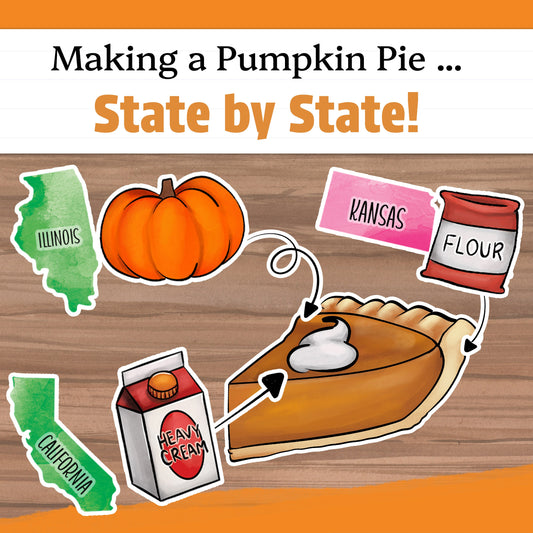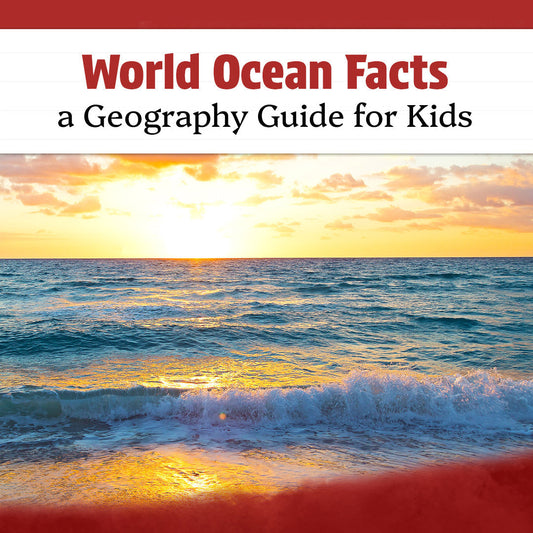
Our Hit the Road Geography curriculum follows a traveling cat as he explores the fifty states. During his travels, he often points out landform terms like playa, valley, and dune. But what do these really mean? And what even is the difference between a plateau, a mesa, and a butte?
Landforms can influence climate and weather, as well as the types of ecosystems that can thrive in a specific place. Identifying landforms is important for figuring out what kind of environment is most suitable for living, farming, commerce, manufacturing, transit, travel, and other human activities.
In this article, we'll be diving into various landforms and their features! From towering mountains to expansive plains, this post serves as a guide to help you identify key landforms in physical geography. Plus, we've assembled all of this information into a quick and handy landforms glossary printable for you. Let’s get into it!
Geography Glossary: Landforms and Features

Playa
A playa (or dry lake bed) is a flat, dry basin found at the lowest point in desert regions. After heavy rains, playas fill with water that then evaporates, leaving behind layers of silt, clay, or salt.
Plateau
A plateau is a large elevated landmass with a flat top and cliffs on at least one side.
Mesa
A mesa is a portion of a plateau that has been eroded by water and has cliffs on all sides. It is wider than it is tall.
Butte
A butte is a mesa that has been further eroded until it is taller than it is wide.
Canyon
A canyon is a deep, narrow valley with steep sides, typically formed when fast-moving water cuts through rock layers, creating dramatic cliffs and walls.
Desert
A desert is an area that receives no more than 10 inches (25 cm) of precipitation a year. Deserts can be mountainous or dry expanses of rock, sand, or salt flats. Even though deserts are often associated with hot climates, snowy places can be deserts too. Antarctica is a desert due to low precipitation. Would you like to learn more about geography? Our Hit the Road Geography curriculum offers a unique and engaging journey through all fifty states!
Would you like to learn more about geography? Our Hit the Road Geography curriculum offers a unique and engaging journey through all fifty states!
With plenty of humor and story-based learning, these units captivate kids and make lessons memorable. Each lesson is divided into bite-size chunks and is open-and-go, so there's no planning on your part. Take a peek at our U.S. geography collection now!

Oasis
An oasis is a small area in a desert that features water, wildlife, and lush vegetation. Oases are formed when underground water reaches the surface.
Dune
A dune is a mound or ridge of sand that is shaped and moved by the wind. Wind picks up sand particles and deposits them in areas where the wind slows down.
Plain
A plain is a wide expanse of flat land with few or no trees. Some plains are grasslands (or prairies) where mostly grass grows.
Hill
A hill is an elevated area of land that is smaller than a mountain. Hills generally have gentle slopes and rounded summits.
Mountain
A mountain is a huge stone slab that rises at least 1,000 feet (304.8 m) above its environment. Formed by glaciers, volcanoes, and erosion, mountains have steep, slanted sides and jagged or curved peaks.
Valley
A valley is a long, low area between two hills or mountains that often has a river flowing through it. Most valleys are formed by river erosion or glaciation and often feature fertile soil and vegetation.
Forest
A forest is a large expanse of land covered by trees and other vegetation. Types of forests include temperate forests and rainforests. Forests provide habitats for many species.We hope you find this geography glossary about landforms and features helpful! Don't forget to download our landforms glossary printable for easy reference.
Take Geography to New Heights!
Our US geography units are immersive downloads that guide your students through each state in the USA. Featuring engaging journal entries from Thaddeus, our traveling cat, as well as hands-on activities, reading and comprehension questions, and writing exercises, these units create an unforgettable learning adventure that brings geography to life.






3 comments
This is perfect for my Language Learners!
Thank You for the freebie printable.
The graphics are very eye-catching. Perfect for my kiddos! What a great resource – thanks!